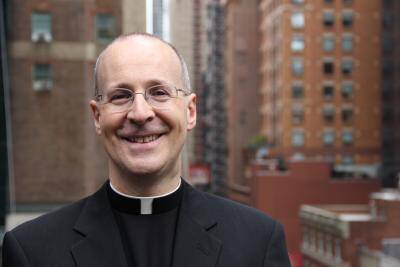Over the last few years, whenever I told friends that I was working on a book on Jesus, they invariably laughed. The most common responses were (in order of frequency) “Ha!” “Well, that’s a small topic!” and “Oh, I’ve heard of him!” But one response stuck with me: “So, are you writing about the Jesus of history or the Christ of faith?”
Unfortunately, those two approaches are often seen as contradictory, when they are in fact complementary.
Most America readers know the distinction: In “historical Jesus” studies, scholars attempt to explain as much as we can know about the life and times of Jesus of Nazareth. Books and articles about the historical Jesus focus on topics like religious customs in first-century Jewish culture in Palestine, the socioeconomic realities of living under Roman rule and the ways that a carpenter would sustain his family in a small village in Galilee.
Such research helps us better understand Jesus within the context of his times. One quick example: In one of his parables, Jesus spins the tale of a steward who is given care of his master’s “talents.” If you know that a “talent” was an immense sum of money, equivalent to 15 years of wages for a day laborer, you’ll have a better understanding of Jesus’ reason for using that term in his story. You’ll understand the parable—and therefore Jesus—better.
Historical Jesus scholars use all the tools available—our understanding of first-century cultures, knowledge of the local languages, even archaeological finds in the region—to understand his life and times. Such studies are often aligned with a “Christology from below,” which attempts to understand Jesus by beginning with his humanity. The starting point is Jesus as a human being, again, the “Jesus of history.”
Books and articles on the “Christ of faith,” by contrast, focus less on the details of his time on earth and more about his place in the Christian faith. These writings consider topics such as the Resurrection, how Christ saves us and the nature of his relationship to the Father and the Holy Spirit. These studies usually begin with the divinity of Jesus Christ, and are aligned with a “Christology from above.” Here the starting point is Jesus as Son of God.
The two approaches are complementary, not contradictory, and both sets of questions are important. If we lose sight of either perspective, we risk turning Jesus into either God pretending to be a man, or a man pretending to be God. To fully meet Jesus Christ, the believer needs both to understand the Jesus of history, the man who walked the earth, and to encounter the Christ of faith, the one who rose from the dead.
Yet many books on the historical Jesus downplay or ignore such essential topics as Jesus’ “works of power” (his miracles) and the Resurrection. Likewise, many books on the Christ of faith set aside “merely” historical considerations like life in first-century Palestine. The division is unfortunate and can lead to an incomplete picture of Jesus Christ.
It also waters down the Resurrection. For the person who rose from the dead on Easter Sunday was Jesus, not another person. In his commentary on John’s Gospel, the late Stanley Marrow, S.J., said that the risen Lord had to be “recognizably and identifiably Jesus of Nazareth, the man whom the disciples knew and followed.” He continues:
For him to have risen as any other than the Jesus of Nazareth that they knew would void the resurrection of all its meaning. The one they had confessed as their risen Lord is the same Jesus of Nazareth that they had known and followed. Showing them “his hands and his side,” which bore the marks of the crucifixion and the pierce by the lance, was not a theatrical gesture, but the necessary credentials of the identity of the risen Lord, who stood before them, with the crucified Jesus of Nazareth whom they knew.
So the answer to my friend’s question about whether I would write about the “Jesus of history” or the “Christ of faith” was, “Both.”
Otherwise, as Father Marrow understood, and countless believers know, what’s the point?








